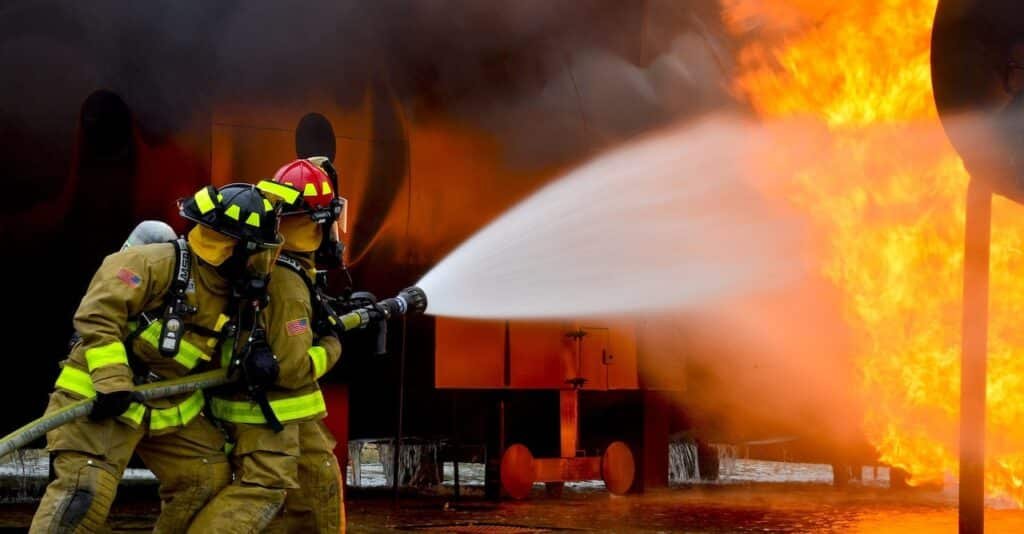
How to put out fire for emergencies
An emergency fire situation and a regular fire event are different, so you must follow different steps to ensure total safety. During a regular event, flames ignite when a grease fire generates in the kitchen. Emergency situations usually make people panic since they happen without notice. During an emergency, you must make fast decisions in order to extinguish the flames in the safest possible manner. In this guide, you’ll learn seven ways to put out fires during emergencies.
Water
Water is one of the best resources for fires. It gets rid of a fire by vaporizing the flames. Vaporization is a unique process that involves steam; as the steam generates, it strategically displaces oxygen. Without oxygen, a fire can’t survive, which is why you must fight a fire with enough water in order to displace all of the oxygen that fuels the flames. You can extinguish indoor fires using several buckets of water and outdoor fires by spraying water out of a powerful hose.
Chemical Compounds
In some cases, a fire will ignite when harsh chemicals cause a reaction. After this happens, you shouldn’t use water to put out the flames because it may cause an explosion. If a fire is caused by a solution that contains hydrocarbons, the flames could roam by interacting with the hydrocarbon chemicals, which can float on water. Besides chemicals, water can also cause problems when it’s used to extinguish electrical fires. If it soaks something that’s powered by electricity, it could damage vital circuits. To effectively extinguish hydrocarbon and electrical fires without using water, you’ll need to use a chemical fire suppressor. This extinguisher sprays a chemical foam that contains a water-based formula. However, the water particles are managed because the foam reduces its surface tension.
Flame Inhibitors
Flame inhibitors extinguisher fires in a very tactical manner. They have a chamber that contains potassium bicarbonate and phosphate sodium; both of these substances interact with fuel that powers a fire. In order to use a flame inhibitor, you must get close to a flame so that the compounds can decrease chemical activity by reducing its inflammable properties. When these properties are gone, a fire will stop burning. Flame inhibitors work best when they’re used to extinguish contained fires in confined environments.
Fire Extinguishers
Fire extinguishers are great options for fires that ignite in residential and commercial locations. Modern extinguishers contain potassium, sodium, and silica gel, which are key compounds that fight pyrophobic-based fires. These types of fires burn in environments that have efficient air circulation. A fire extinguisher stops pyroholic liquid fires by sustaining the flames. The process happens quickly because the chemicals from a fire extinguisher absorb key elements that fuel a fire.
At local hardware stores, you’ll find fire extinguishers in a variety of sizes. The smallest options are ideal for compact spaces, and the larger units work well in a kitchen or basement.
Aerosol Suppressor
An aerosol suppressor is an alternative option for spaces that lack a fire extinguisher. This device has a chamber that holds gas and solid particles. The aerosol has a gaseous form inside the chamber, and it turns into a solid when it’s discharged.
Aerosol suppressors provide a tactical advantage when they’re placed in a constricted area. If a fire starts in a place that’s tough to access, you can extinguish it without aiming an aerosol suppressor. Accuracy isn’t required because this suppressor puts out a fire by flooding an area.
Blanket
A blanket can help you extinguish a small fire that’s contained in an isolated area. If a blanket is very dense, it will eliminate oxygen and stop a fire quickly. Although a traditional blanket can accomplish this, you’ll get very reliable results by using a fire blanket instead. This type of blanket is constructed out of a fire-resistant material, so it won’t burn if it lingers over a flame. If you can’t find a fire blanket, you can make one by soaking a regular blanket in water.
Baking Soda
When a fire ignites from grease in a pot, pan, or skillet, use baking soda to extinguish it. You’ll have to act fast because a grease fire can grow fairly quickly. To achieve the best results, toss a handful of baking soda on the fire from a safe distance.
Safety Strategies
These seven solutions are only effective when they’re used quickly during emergency situations. If you delay, the process of extinguishing a fire will be more challenging since the flames may grow or travel to other spaces. In order to stay safe when you’re unable to stop a fire, you’ll need
- An evacuation plan: The evacuation route will help everyone exit the home or building safely. It should lead everyone along a path that’s convenient and practical, and the exit point shouldn’t be tough to access. In a business setting, Quill safety signs can provide benefits by guiding employees along proper paths.
- A leader: Smoke from a fire can decrease visibility in a home or building, so someone must be a leader. During an emergency event, the leader should keep everyone calm throughout the evacuation process.
- A meeting place: If a house fire is very wild and large, the process of following an evacuation path may be challenging. This is why you’ll need a meeting place where everyone can gather after evacuating. The meeting place should be a convenient destination that’s easy to access on foot.
